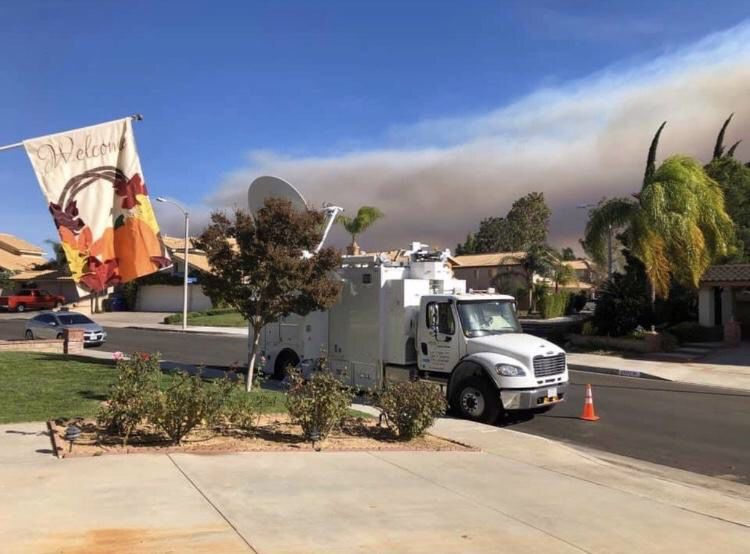Wildfires are “scary stuff” for California-native students
November 4, 2019
As Oregon State University prepared for midterms and Halloween celebrations over the past weeks, many students’ families were endangered by the recent wave of wildfires across California.
Wildfires have become expected annually in California, but the recent cluster of fires has resulted in sudden evacuations and blackouts. Many students have expressed concern for the future of their hometowns, like Austin Mullins, fourth-year in physics at OSU.
Mullins expressed his concern for his family and friends in Castaic, California, a region reached by the fires. “My family got pre-evacuation notices, so they didn’t evacuate but were on watch,” Mullins said. “My aunt’s friend’s house burned down. Three houses burned down in Castaic, but my family’s safe.”
According to Mullins, the fire has been a distraction from his academics. “The fire’s just another thing on my mind, especially during midterm season. Knowing my family is in harm’s way is just another thing I have to think about,” Mullins said.
To give an idea of the magnitude of the fire, Mullins gave an everyday example; “I have a cousin who took nine hours getting home on a trip that usually takes one. It took him three different freeways to get home. It’s scary stuff.”
Another student with family in California, Matthew Graves, first-year in chemical engineering at Oregon State, viewed the recent fires as just another part of life in the golden state. He said Californian communities prep for fire season in many ways, like community-watch programs in rural areas that track fires from high elevations. In reference to the current crisis, Graves said, “This happens every year. California is a beautiful place, but it’s got a tendency to catch on fire.”
Despite being common, the current fires started later in the year and resulted in more area burned than previous wildfires. In a 2019 research article, “Observed Impacts of Anthropogenic Climate Change on Wildfire in California” climatologists reported a “fivefold increase in annual burned area in California”, and project that the trend will continue to result in larger and less predictable fires in the future.
“Wildfire season tends to end in the middle of fall around late September, because this time of year the temperature has dropped and there’s more precipitation, so dry lighting doesn’t usually occur, and fires are [under usual conditions] fewer and far between,” Graves said.
Oregon State is also home to many indigeounous students, like Luhui Whitebear, Ph.D candidate in the Women, Gender and Sexuality Studies program and a member of the Coastal Band Chumash, a tribe that has been directly affected by the fires in California.
“Besides just worrying about family, we also have to consider our ability to gather cultural materials, because everything has to regrow,” Whitebear said.
The Coastal Band Chumash have a strong history of basketry, a tradition that requires flammable natural materials like juncus, sometimes known as basket rush. Plants like these and other important land resources will take time to be accessible again for cultural use.
Mullins said he believes the wildfires are a sensitive topic that should be handled carefully in casual discussion.
“Students really need to be aware, we’re a lot of West Coast kids, a lot of students from California come here. It’s a sensitive topic, we should be careful when talking about it, because students here could have family in danger or be in harm’s way. Just something to be considerate of.”



















































































![Newspaper clipping from February 25, 1970 in the Daily Barometer showing an article written by Bob Allen, past Barometer Editor. This article was written to spotlight both the student body’s lack of participation with student government at the time in conjunction with their class representatives response. [It’s important to note ASOSU was not structured identically to today’s standards, likely having a president on behalf of each class work together as one entity as opposed to one president representing all classes.]](https://dailybaro.orangemedianetwork.com/wp-content/uploads/2025/03/Screenshot-2025-03-12-1.00.42-PM-e1741811160853.png)























